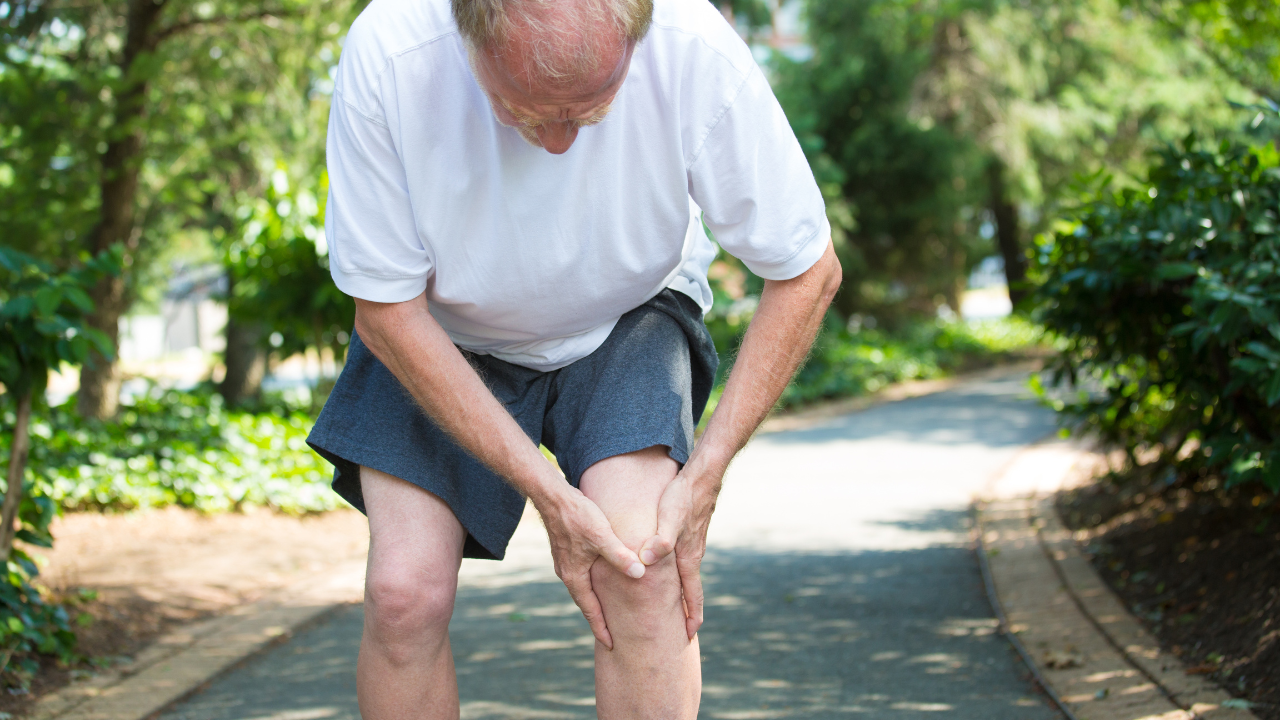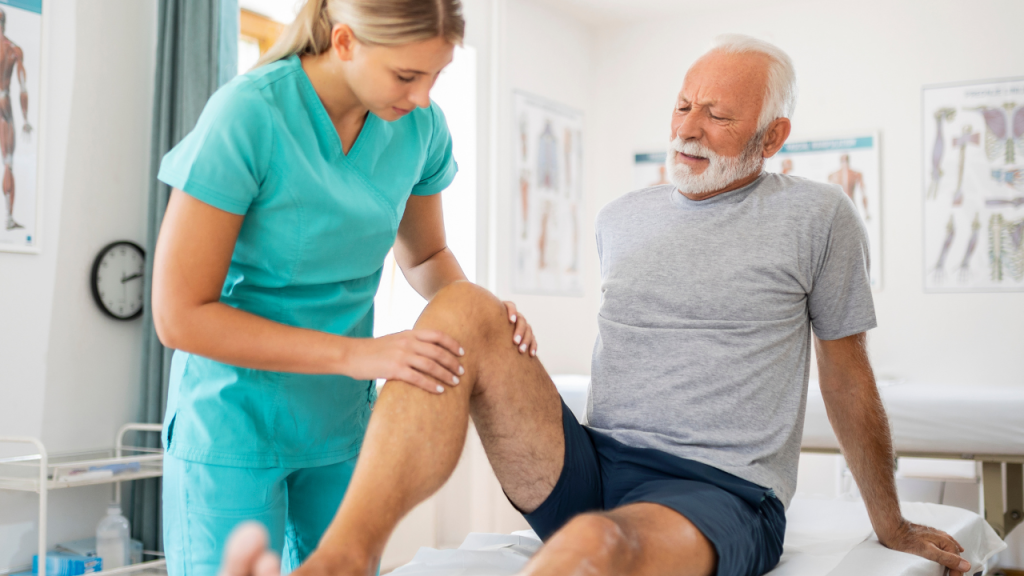
Chronic knee pain isn’t just an inconvenience—it’s a daily disruption, a persistent ache that dulls the joy of walking, climbing stairs, or even getting out of bed. For millions of people, that subtle throb becomes a regular companion, sometimes flaring into something sharp, stabbing, or immobilizing. You’ve probably tried the over-the-counter pills, maybe even a knee brace or some ice packs at night. But when relief becomes a distant dream, there’s one path that often stands out—not for being flashy, but for being transformative: physical therapy.
At first glance, physical therapy might sound like a long road of slow stretches and appointments you’re not sure will make a difference. But that’s far from the truth, especially when the right clinic becomes your partner. At Thrive Physical Therapy, chronic knee pain isn’t treated as a one-size-fits-all problem. It’s understood, respected, and approached with strategies that work for your unique story, your specific knee, and your real-life goals.
Understanding What Chronic Knee Pain Really Means
To truly tackle chronic knee pain, you have to understand it. This isn’t about a one-time injury or soreness from a tough hike. Chronic pain in the knee is pain that lasts longer than three months, often worsening over time. It could be the aftermath of an old injury that never fully healed, a degenerative condition like osteoarthritis, or even the result of years of poor movement habits that silently wore down your joint.
Sometimes the pain is localized at the front, near the kneecap; other times, it radiates along the sides or deep within the joint. You might feel stiffness in the morning or pain that worsens at night. Maybe squatting or kneeling feels like an impossible task. Whatever the symptom, chronic knee pain tends to creep in quietly and then settle in with a stubborn grip.
But here’s the good news: your knee isn’t doomed. It’s resilient. And the right kind of physical therapy can help unlock its potential for healing.
Why Surgery Isn’t Always the Answer
It’s common to believe that chronic pain equals surgery. When you’re in discomfort every day, it can feel like surgery is the only way to fix what’s broken. But surgery comes with risks—downtime, side effects, and sometimes less-than-perfect outcomes. Physical therapy, in contrast, aims to restore your knee’s natural function without invasive procedures. It strengthens the muscles around the knee, improves your movement patterns, and relieves strain on the joint itself.
More importantly, it teaches your body to work better as a whole. Because often, chronic knee pain isn’t just about the knee—it’s about the way your hips move, how your feet strike the ground, or how your posture is affecting alignment. Physical therapy offers a full-body approach to fixing the problem at the root.
The Thrive Approach: Personalized Care That Makes a Difference
Thrive Physical Therapy doesn’t believe in cookie-cutter rehab programs. Walk through their doors, and you won’t be handed a generic sheet of exercises and sent on your way. Instead, you’ll be welcomed into a space where your pain is heard, your goals are prioritized, and your progress is tracked with intention.
Your physical therapist will take time to understand your medical history, the nature of your knee pain, and your lifestyle. Are you a runner trying to get back on the trail? A parent who just wants to play with their kids again? An older adult worried about losing independence? Thrive molds its treatment plan to suit your life—not the other way around.
Your therapy might include targeted exercises to build quad and hamstring strength, techniques to enhance balance and proprioception (your body’s sense of where it is in space), and even soft tissue mobilization to release tight structures around the joint. Modalities like heat, ice, or electrical stimulation may be used where appropriate, but the foundation is always movement—smart, guided, progressive movement.
And it’s not just about the exercises. Education is a big part of the Thrive experience. Patients learn why they’re doing each stretch or movement, how it impacts their pain, and what they can do at home to support their recovery. That kind of empowerment can be game-changing.
The Role of Movement Patterns in Pain Relief
Many people don’t realize that chronic knee pain can be the result of years of movement dysfunction. Maybe you tend to collapse inward at the knees when you walk or climb stairs. Maybe your gait has subtly changed to avoid discomfort, leading to compensations elsewhere in the body.
A skilled physical therapist at Thrive will identify these patterns. Through gait analysis, postural assessments, and functional testing, they can pinpoint how your movements might be contributing to the pain. Then they’ll work with you to retrain those patterns—through cueing, drills, and practice—so you begin to move in ways that support your joints rather than strain them.
Over time, this work leads to real, lasting changes—not just pain relief, but improved confidence and the freedom to move without fear.
Strength and Stability: The Pillars of a Healthy Knee
One of the core goals of physical therapy for chronic knee pain is to build a stable and strong knee. But the knee itself doesn’t work in isolation. The surrounding muscles—quads, hamstrings, calves, glutes, and even your core—all play a role in protecting the joint.
At Thrive, strength training is carefully introduced and progressed based on your capacity. It might start with isometric holds, then evolve into dynamic, functional movements like step-ups, mini-squats, or resistance band work. Stability drills train the smaller stabilizers in your legs and hips, making your knee feel more supported and secure.
Patients often notice that their pain decreases not just because the joint is less inflamed, but because the surrounding structures are finally doing their job. The knee no longer has to carry the burden alone.
The Importance of Consistency and Commitment
One of the most crucial things to understand about physical therapy is that it’s not a magic switch. Results come with time, consistency, and effort. Thrive’s therapists are compassionate, but they’ll also hold you accountable. You’ll be encouraged to stick to your home program, keep showing up for sessions, and give your recovery the attention it deserves.
In many cases, patients begin to see measurable improvements within a few weeks—less pain with walking, improved range of motion, stronger legs. But the full transformation often takes longer. What makes Thrive special is that they stay with you for the long haul, adapting your plan as needed and celebrating your milestones along the way.

Pain Science: Changing How You Perceive Discomfort
Another layer of physical therapy that often gets overlooked is the psychology of pain. Chronic pain can mess with your brain. It rewires your nervous system, amplifying the sensation of pain even after the original injury has healed. This is called central sensitization—and it’s real.
Thrive’s therapists are trained to help you understand pain science. They’ll teach you how to reframe your experience, reduce fear-avoidance behaviors, and recognize that hurt doesn’t always equal harm. These mental shifts, combined with physical progress, can dramatically reduce pain intensity and frequency.
It’s not just about “fixing” the knee—it’s about helping your brain and body trust movement again.
Real Patients, Real Stories
Ask any long-time patient at Thrive Physical Therapy, and you’ll hear stories of transformation. There’s the young teacher who could barely make it through a school day without aching knees—now walking five miles every weekend. Or the retired firefighter who thought his hiking days were over, now planning his next mountain trip. These aren’t rare miracles; they’re the result of tailored, thoughtful care delivered with compassion and expertise.
What makes these stories powerful is not just the outcome, but the journey. Patients are listened to, supported, and guided. There’s no rush, no pressure—just steady, sustainable progress.
Your Path Forward Starts Today
Chronic knee pain doesn’t have to be a life sentence. Yes, it’s frustrating. Yes, it can make you feel old before your time or disconnected from the activities you once loved. But your body is capable of healing. And with the right guidance, that healing can become a reality.
Physical therapy offers more than temporary relief—it offers hope. Hope that you can walk without limping. That stairs won’t feel like a mountain. That playtime with your grandkids won’t end in a grimace. That dancing at a wedding, gardening on a sunny day, or simply going for a pain-free walk becomes your new normal.
If you’ve been living with chronic knee pain and feel like you’ve tried everything, don’t give up. The solution might not be more pills or more waiting. It might be as simple—and as powerful—as moving your body the right way, with someone who truly understands how.
Suggested Reading: Knee Injury Recovery: Why Physical Therapy is Crucial
Conclusion: Trust Your Body, Trust the Process
Relieving chronic knee pain through physical therapy isn’t just about exercises—it’s about rebuilding a relationship with your body. It’s about tuning in to what your knee is trying to tell you and responding with movement, strength, and care. It’s a journey, yes—but one worth taking.
And you don’t have to do it alone.
At Thrive Physical Therapy, every step you take is supported by experts who see beyond your diagnosis. They see your potential, your progress, and your power to heal. Whether you’re starting today or restarting after years of struggle, Thrive offers a place where hope and healing meet.

